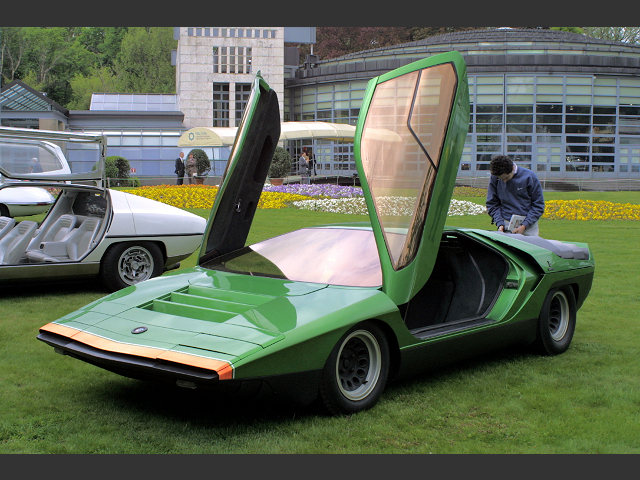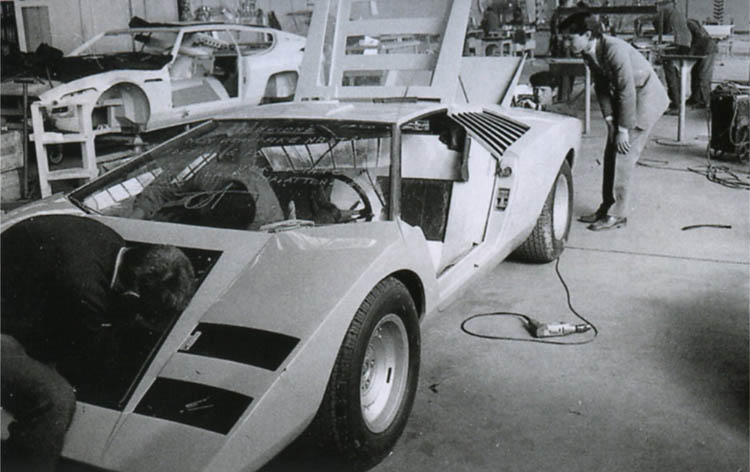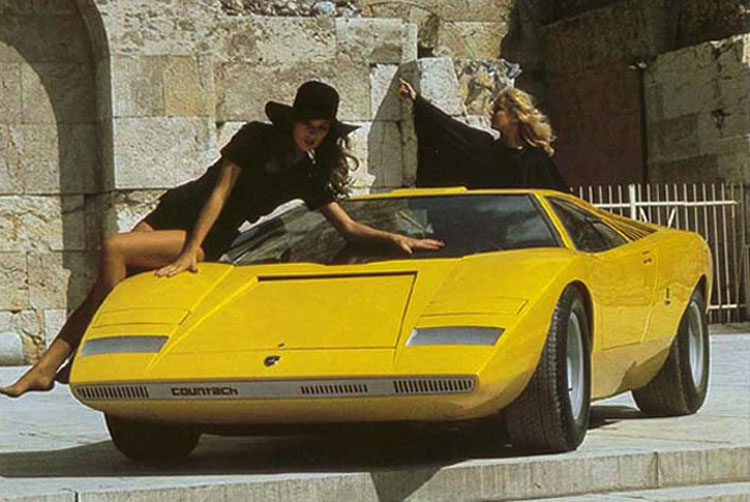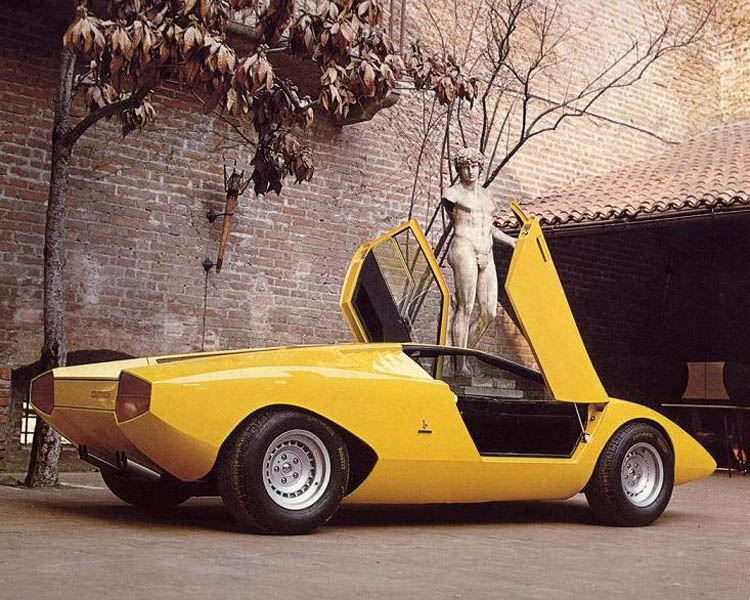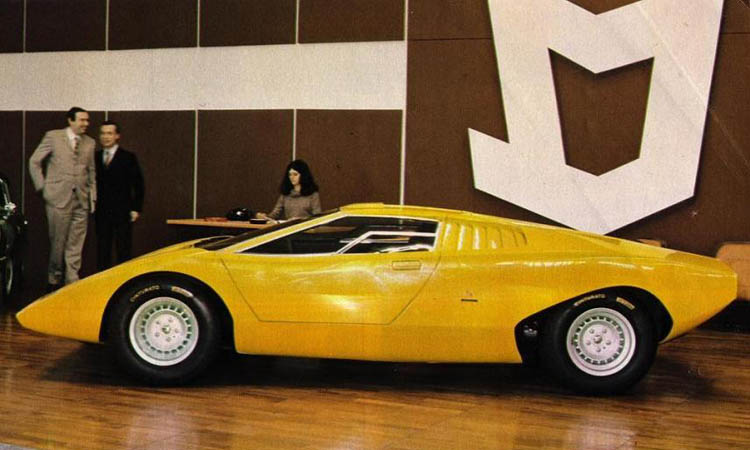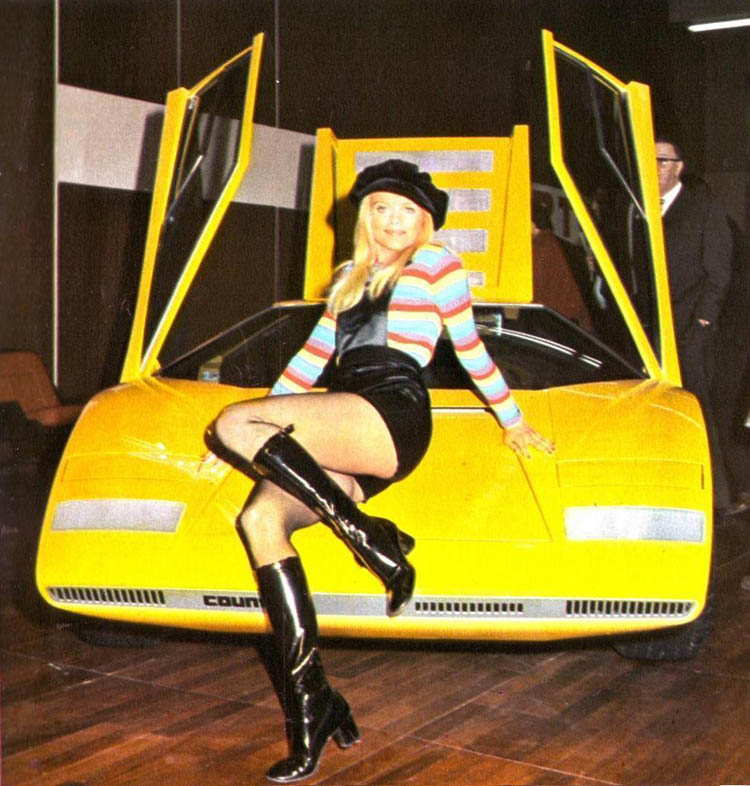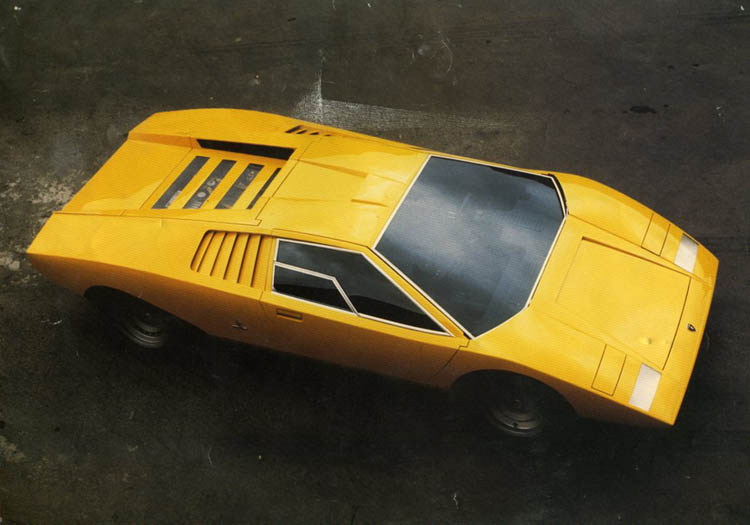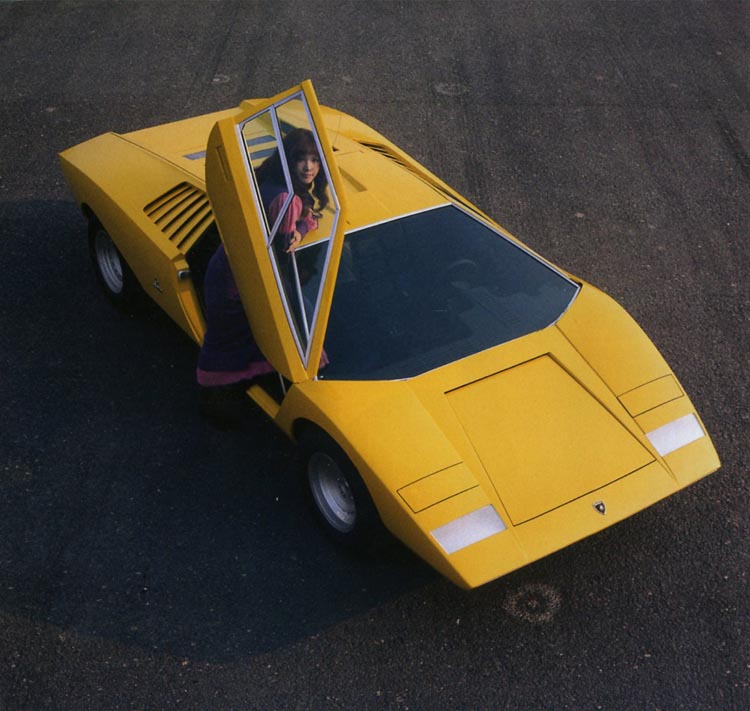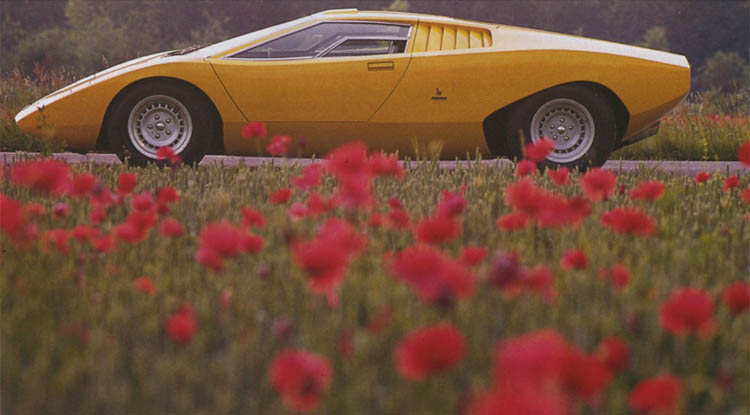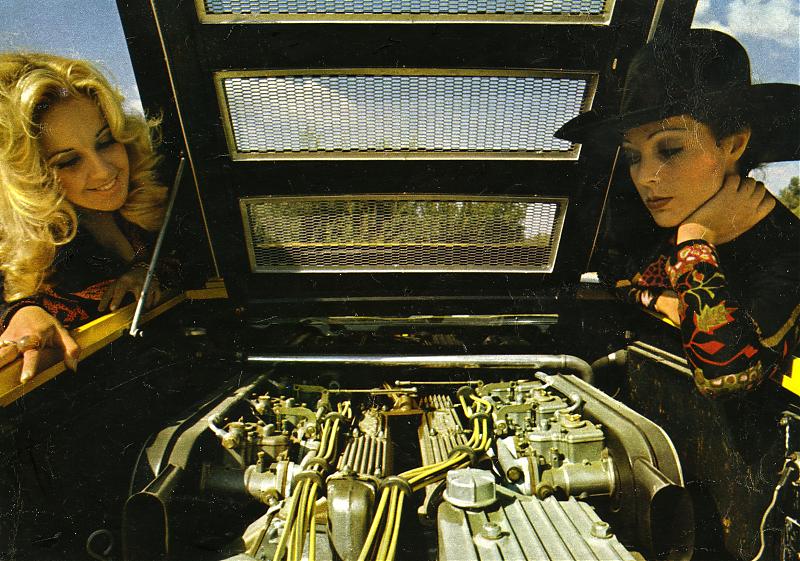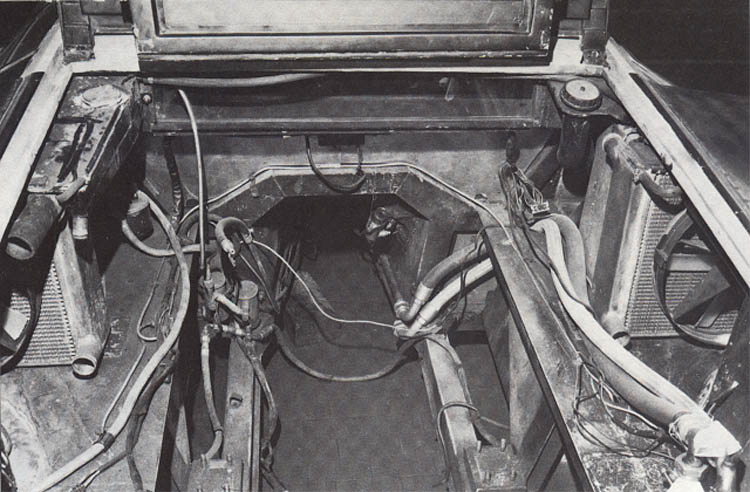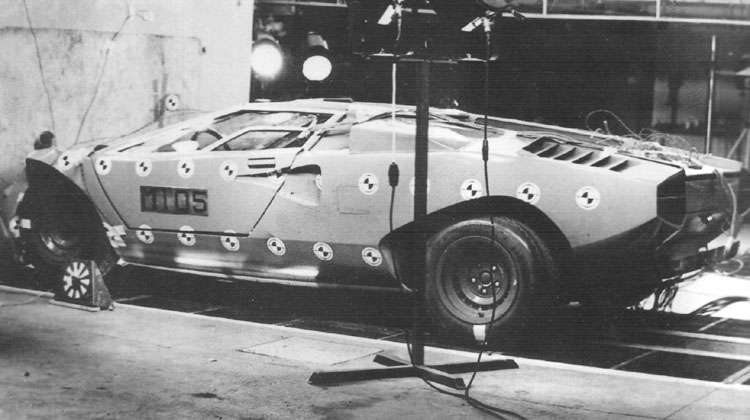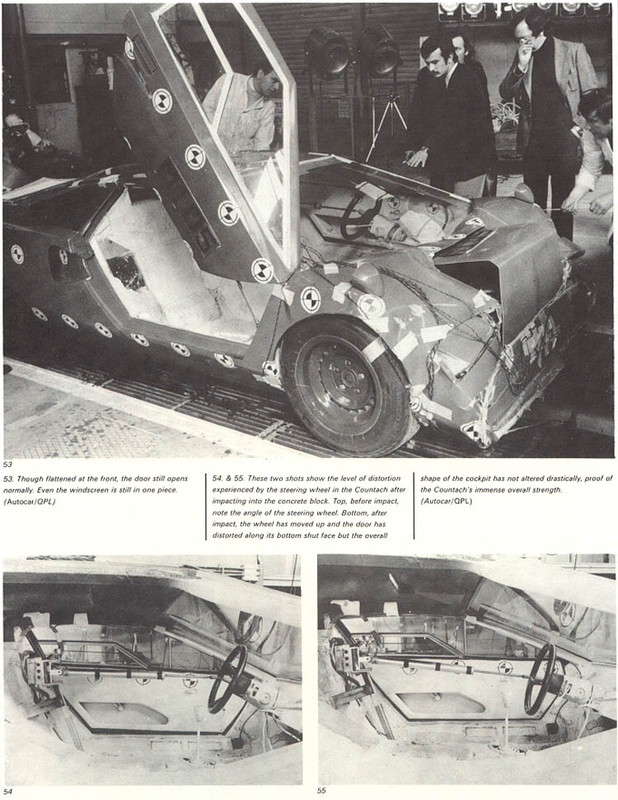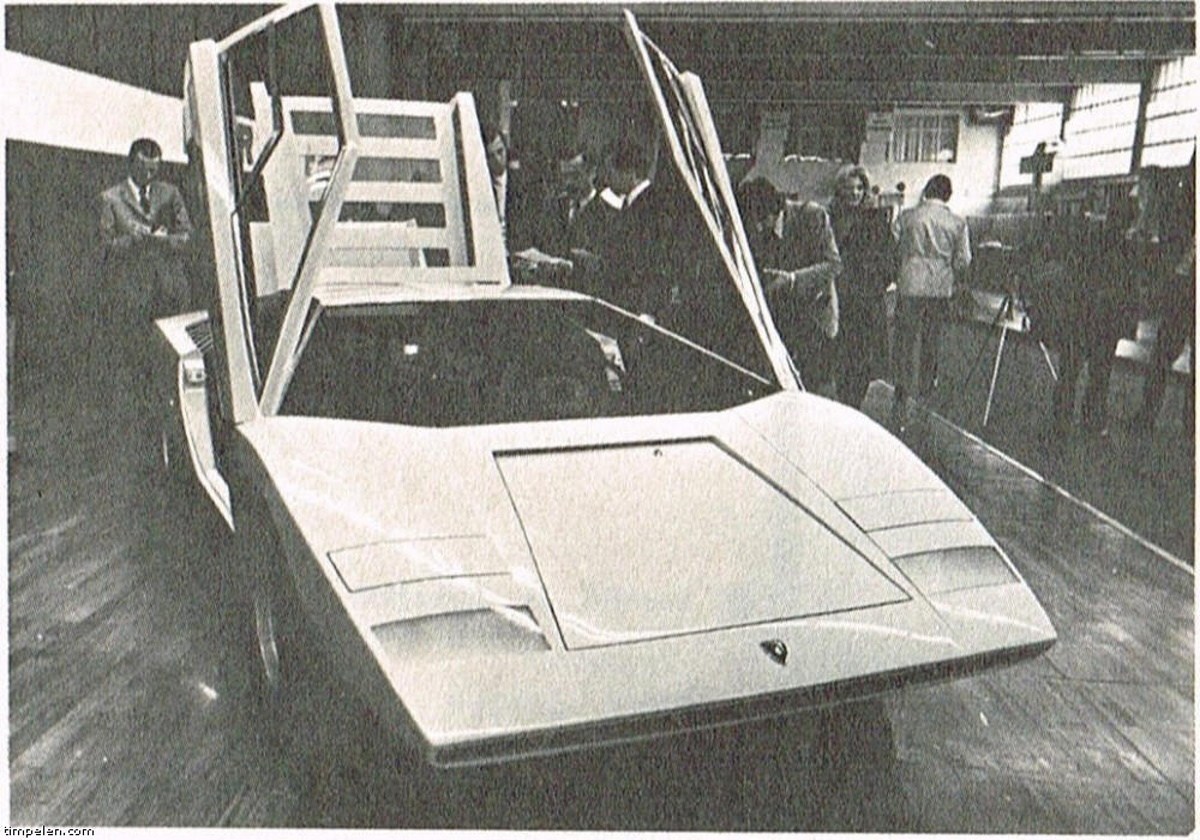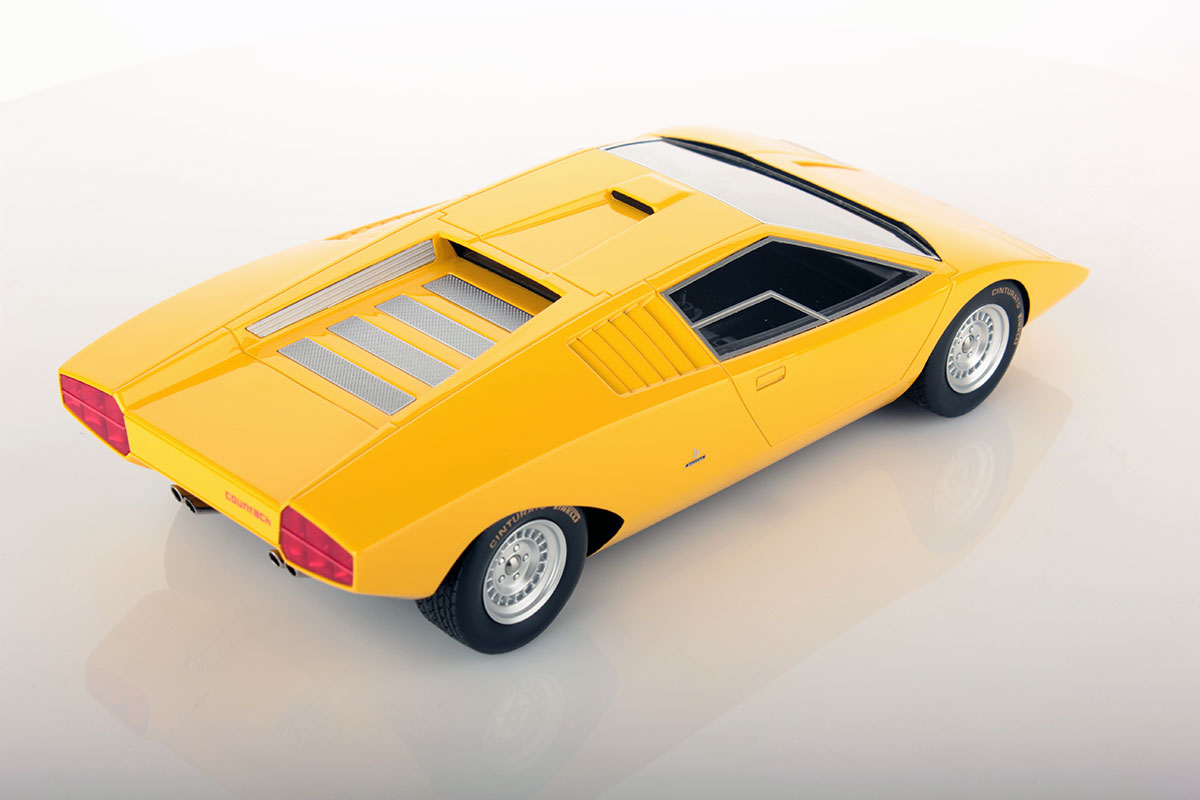cybermad
Clan Leader
- Modelo
- Z3 2.8 / GR86
- Registrado
- 11 Feb 2008
- Mensajes
- 106.350
- Reacciones
- 93.723
Hace exactamente medio siglo, el fabricante de automóviles italiano presentó el prototipo Countach LP 500. Durante los siguientes tres años, los ingenieros de Lamborghini lo mejoraron y eso dio como resultado la versión de producción LP400, uno de los autos deportivos más icónicos de todos los tiempos.
El prototipo Countach LP 500 de Lamborghini cumple 50 años, esta es su cautivadora historia
11 de marzo de 2021

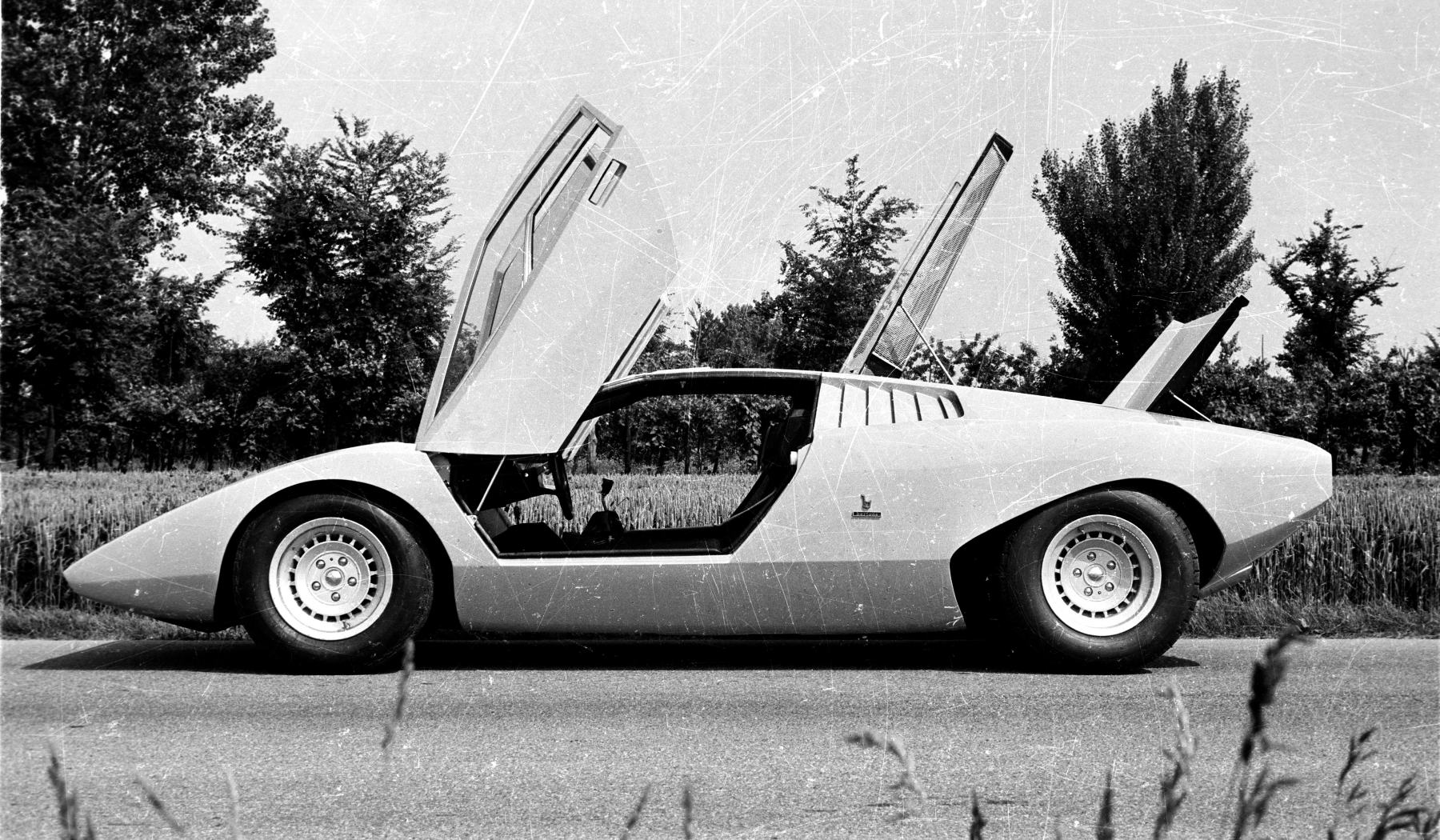
El 11 de marzo de 1971, a las diez de la mañana, Lamborghini reveló el prototipo amarillo Countach LP 500 en el espacio de exhibición de Carrozzeria Bertone en el famoso Salón del Automóvil de Ginebra.
La presentación fue increíblemente exitosa, con la prensa y los visitantes acudiendo en masa para echar un vistazo al innovador automóvil.
Eclipsó a todos los demás vehículos exhibidos en el evento, incluido el Maserati Bora , Alpine A310 o su hermano, el Miura P400 SV. Este último ocupó el stand oficial de Lamborghini en el evento, ya que la compañía esperaba que llamara más la atención que el nuevo prototipo. Esa fue la principal razón por la que el LP 500 hizo su debut público en el stand de Carrozzeria Bertone.

En los meses siguientes, el Countach LP 500 fue el principal tema de conversación para los fanáticos de los automóviles en todo el mundo, especialmente porque apareció en prácticamente todas las revistas automotrices internacionales.
El desarrollo del automóvil comenzó en 1970 cuando Ferruccio Lamborghini quería crear un sucesor digno para el aclamado Miura presentado cuatro años antes, que enfrentaba una fuerte competencia del nuevo Ferrari 365 GTB / 4 'Daytona' .
Con el nombre en clave LP112, el proyecto fue entregado al ingeniero jefe Paolo Stanzani, uno de los hombres responsables del desarrollo del Miura.

Aunque Ferruccio Lamborghini inicialmente quería que el automóvil fuera un gran turismo cómodo, Stanzani argumentó que el sucesor del Miura debería ser un automóvil deportivo intransigente que supere los límites del rendimiento, la aerodinámica y la estética.
El jefe finalmente reconoció el potencial de mercado de tal automóvil y le dio luz verde a Stanzani. El ingeniero jefe reunió un equipo que incluía al piloto de pruebas Bob Wallace, el ingeniero asistente Massimo Parenti y Marcello Gandini, director de diseño de Carrozzeria Bertone en ese momento.
Gandini fue responsable del diseño exterior futurista del Countach , incluidas sus famosas puertas de tijera. Esa característica se mantuvo en la versión de producción final y ha caracterizado a los modelos de doce cilindros de Lamborghini desde entonces.

Sin embargo, el LP 500 era significativamente diferente al Countach que entraría en producción en 1974. En lugar de un bastidor tubular, el prototipo tenía un chasis de plataforma y estaba propulsado por un motor único de 5.0 litros (4.971 cc ) V12. Además, las tomas de aire laterales tenían un diseño diferente y una sofisticada instrumentación electrónica dominaba el tablero.
A diferencia de los Lamborghinis anteriores que recibieron nombres asociados con las corridas de toros, el nombre de este automóvil se origina en el dialecto regional de Piamonte. Cuenta la leyenda que en las etapas finales de desarrollo, el prototipo fue escondido en un cobertizo en una granja cerca de la provincia de Turín de Grugliasco y fue descubierto por un agricultor local que exclamó: "¡contacto!" (pronunciado Countach).
Cuando Marcello Gandini, nacido en Piamonte, escuchó la historia, pensó que sería un gran nombre para el nuevo automóvil y convenció a Ferruccio Lamborghini para que lo hiciera oficial.

Después de su exitosa presentación en 1971, el LP 500 fue equipado con un motor V12 de 4.0 litros más confiable y fue conducido por el principal piloto de pruebas Bob Wallace para cada prueba de carretera imaginable.
Sin embargo, la historia del prototipo no tiene un final feliz. Se utilizó en las pruebas de choque necesarias para la homologación de la versión de producción final y finalmente se desechó.
La serie Countach se construyó entre 1974 y 1990, cuando fue reemplazada por el Diablo . Durante este período, se convirtió en uno de los autos deportivos más populares de todos los tiempos y ayudó a la compañía a sobrevivir a su período más difícil.

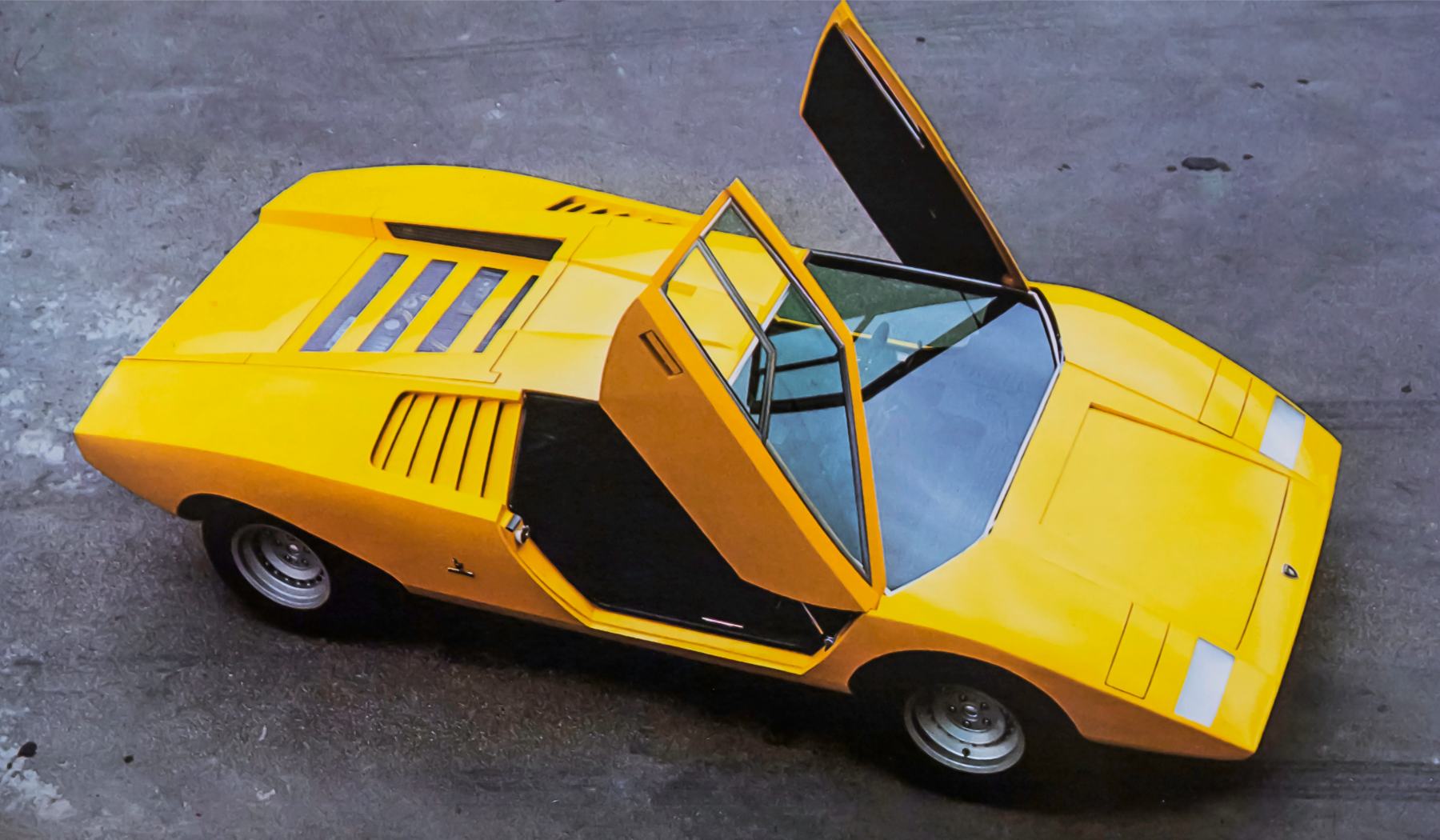


Exactly half of century ago, the Italian carmaker unveiled the Countach LP 500 prototype. Over the next three years, Lamborghini engineers enhanced it and that resulted in the LP400 production version, one of the most iconic sports cars of all time.
Lamborghini's Countach LP 500 Prototype Turns 50, This Is Its Captivating Story
11 Mar 2021
On March 11, 1971, at ten o’clock in the morning, Lamborghini revealed the yellow Countach LP 500 prototype in the exhibition space of Carrozzeria Bertone at the famed Geneva Motor Show.
The unveiling was incredibly successful, with both the press and the visitors flocking to get a glimpse of the innovative car.
It overshadowed all other vehicles showcased at the event, including the Maserati Bora, Alpine A310, or its sibling, the Miura P400 SV. The latter occupied Lamborghini’s official stand at the event, as the company expected it to draw more attention than the new prototype. That was the main reason why the LP 500 made its public debut on Carrozzeria Bertone’s stand.
In the coming months, the Countach LP 500 was the main talking point for car fanatics worldwide, especially because it was featured in virtually all the international automotive magazines.
The development of the car begun in 1970 as Ferruccio Lamborghini wanted to create a worthy successor for the acclaimed Miura introduced four years earlier, which was facing strong competition from the newer Ferrari 365 GTB/4 ‘Daytona’.
Codenamed LP112, the project was handed down to chief engineer Paolo Stanzani, one of the men responsible for developing the Miura.
Although Ferruccio Lamborghini initially wanted the car to be a comfortable grand tourer, Stanzani argued that the Miura’s successor should be an uncompromising sports car that pushes the boundaries of performance, aerodynamics, and aesthetics.
The boss eventually recognized the market potential of such a car and gave Stanzani the green light. The chief engineer assembled a team that included test driver Bob Wallace, assistant engineer Massimo Parenti and Marcello Gandini, Carrozzeria Bertone’s design director at the time.
Gandini was responsible for the Countach's futuristic exterior design, including its famous scissor doors. That feature was kept on the final production version and has characterized Lamborghini’s twelve-cylinder models ever since.
However, the LP 500 was significantly different than the Countach that would go into production in 1974. Instead of a tubular frame, the prototype had a platform chassis and was powered by a one-of-a-kind 5.0-liter (4,971-cc) V12. Additionally, the side air intakes had a different design and sophisticated electronic instrumentation dominated the dashboard.
Unlike previous Lamborghinis that were given names associated with bullfighting, this car's name originates from the Piedmont regional dialect. Legend has it that in the final stages of development, the prototype was hidden in a shed on a farm near the Grugliasco province of Turin and was discovered by a local farmer who exclaimed: “contact!” (pronounced Countach).
When Piedmont-born Marcello Gandini heard the story, he thought that it would make a great name for the new car and convinced Ferruccio Lamborghini to make it official.
After its successful unveiling in 1971, the LP 500 was equipped with a more reliable 4.0-liter V12 and was driven by chief test driver Bob Wallace for every conceivable road test.
The prototype’s story doesn’t have a happy ending, though. It was used in crash tests required for the homologation of the final production version and was eventually scrapped.
The series Countach was built from 1974 to 1990, when it was replaced by the Diablo. During this period, it became one of the most popular sports cars of all time and helped the company survive its most difficult period.
El prototipo Countach LP 500 de Lamborghini cumple 50 años, esta es su cautivadora historia
11 de marzo de 2021


El 11 de marzo de 1971, a las diez de la mañana, Lamborghini reveló el prototipo amarillo Countach LP 500 en el espacio de exhibición de Carrozzeria Bertone en el famoso Salón del Automóvil de Ginebra.
La presentación fue increíblemente exitosa, con la prensa y los visitantes acudiendo en masa para echar un vistazo al innovador automóvil.
Eclipsó a todos los demás vehículos exhibidos en el evento, incluido el Maserati Bora , Alpine A310 o su hermano, el Miura P400 SV. Este último ocupó el stand oficial de Lamborghini en el evento, ya que la compañía esperaba que llamara más la atención que el nuevo prototipo. Esa fue la principal razón por la que el LP 500 hizo su debut público en el stand de Carrozzeria Bertone.

En los meses siguientes, el Countach LP 500 fue el principal tema de conversación para los fanáticos de los automóviles en todo el mundo, especialmente porque apareció en prácticamente todas las revistas automotrices internacionales.
El desarrollo del automóvil comenzó en 1970 cuando Ferruccio Lamborghini quería crear un sucesor digno para el aclamado Miura presentado cuatro años antes, que enfrentaba una fuerte competencia del nuevo Ferrari 365 GTB / 4 'Daytona' .
Con el nombre en clave LP112, el proyecto fue entregado al ingeniero jefe Paolo Stanzani, uno de los hombres responsables del desarrollo del Miura.

Aunque Ferruccio Lamborghini inicialmente quería que el automóvil fuera un gran turismo cómodo, Stanzani argumentó que el sucesor del Miura debería ser un automóvil deportivo intransigente que supere los límites del rendimiento, la aerodinámica y la estética.
El jefe finalmente reconoció el potencial de mercado de tal automóvil y le dio luz verde a Stanzani. El ingeniero jefe reunió un equipo que incluía al piloto de pruebas Bob Wallace, el ingeniero asistente Massimo Parenti y Marcello Gandini, director de diseño de Carrozzeria Bertone en ese momento.
Gandini fue responsable del diseño exterior futurista del Countach , incluidas sus famosas puertas de tijera. Esa característica se mantuvo en la versión de producción final y ha caracterizado a los modelos de doce cilindros de Lamborghini desde entonces.

Sin embargo, el LP 500 era significativamente diferente al Countach que entraría en producción en 1974. En lugar de un bastidor tubular, el prototipo tenía un chasis de plataforma y estaba propulsado por un motor único de 5.0 litros (4.971 cc ) V12. Además, las tomas de aire laterales tenían un diseño diferente y una sofisticada instrumentación electrónica dominaba el tablero.
A diferencia de los Lamborghinis anteriores que recibieron nombres asociados con las corridas de toros, el nombre de este automóvil se origina en el dialecto regional de Piamonte. Cuenta la leyenda que en las etapas finales de desarrollo, el prototipo fue escondido en un cobertizo en una granja cerca de la provincia de Turín de Grugliasco y fue descubierto por un agricultor local que exclamó: "¡contacto!" (pronunciado Countach).
Cuando Marcello Gandini, nacido en Piamonte, escuchó la historia, pensó que sería un gran nombre para el nuevo automóvil y convenció a Ferruccio Lamborghini para que lo hiciera oficial.

Después de su exitosa presentación en 1971, el LP 500 fue equipado con un motor V12 de 4.0 litros más confiable y fue conducido por el principal piloto de pruebas Bob Wallace para cada prueba de carretera imaginable.
Sin embargo, la historia del prototipo no tiene un final feliz. Se utilizó en las pruebas de choque necesarias para la homologación de la versión de producción final y finalmente se desechó.
La serie Countach se construyó entre 1974 y 1990, cuando fue reemplazada por el Diablo . Durante este período, se convirtió en uno de los autos deportivos más populares de todos los tiempos y ayudó a la compañía a sobrevivir a su período más difícil.




Exactly half of century ago, the Italian carmaker unveiled the Countach LP 500 prototype. Over the next three years, Lamborghini engineers enhanced it and that resulted in the LP400 production version, one of the most iconic sports cars of all time.
Lamborghini's Countach LP 500 Prototype Turns 50, This Is Its Captivating Story
11 Mar 2021
On March 11, 1971, at ten o’clock in the morning, Lamborghini revealed the yellow Countach LP 500 prototype in the exhibition space of Carrozzeria Bertone at the famed Geneva Motor Show.
The unveiling was incredibly successful, with both the press and the visitors flocking to get a glimpse of the innovative car.
It overshadowed all other vehicles showcased at the event, including the Maserati Bora, Alpine A310, or its sibling, the Miura P400 SV. The latter occupied Lamborghini’s official stand at the event, as the company expected it to draw more attention than the new prototype. That was the main reason why the LP 500 made its public debut on Carrozzeria Bertone’s stand.
In the coming months, the Countach LP 500 was the main talking point for car fanatics worldwide, especially because it was featured in virtually all the international automotive magazines.
The development of the car begun in 1970 as Ferruccio Lamborghini wanted to create a worthy successor for the acclaimed Miura introduced four years earlier, which was facing strong competition from the newer Ferrari 365 GTB/4 ‘Daytona’.
Codenamed LP112, the project was handed down to chief engineer Paolo Stanzani, one of the men responsible for developing the Miura.
Although Ferruccio Lamborghini initially wanted the car to be a comfortable grand tourer, Stanzani argued that the Miura’s successor should be an uncompromising sports car that pushes the boundaries of performance, aerodynamics, and aesthetics.
The boss eventually recognized the market potential of such a car and gave Stanzani the green light. The chief engineer assembled a team that included test driver Bob Wallace, assistant engineer Massimo Parenti and Marcello Gandini, Carrozzeria Bertone’s design director at the time.
Gandini was responsible for the Countach's futuristic exterior design, including its famous scissor doors. That feature was kept on the final production version and has characterized Lamborghini’s twelve-cylinder models ever since.
However, the LP 500 was significantly different than the Countach that would go into production in 1974. Instead of a tubular frame, the prototype had a platform chassis and was powered by a one-of-a-kind 5.0-liter (4,971-cc) V12. Additionally, the side air intakes had a different design and sophisticated electronic instrumentation dominated the dashboard.
Unlike previous Lamborghinis that were given names associated with bullfighting, this car's name originates from the Piedmont regional dialect. Legend has it that in the final stages of development, the prototype was hidden in a shed on a farm near the Grugliasco province of Turin and was discovered by a local farmer who exclaimed: “contact!” (pronounced Countach).
When Piedmont-born Marcello Gandini heard the story, he thought that it would make a great name for the new car and convinced Ferruccio Lamborghini to make it official.
After its successful unveiling in 1971, the LP 500 was equipped with a more reliable 4.0-liter V12 and was driven by chief test driver Bob Wallace for every conceivable road test.
The prototype’s story doesn’t have a happy ending, though. It was used in crash tests required for the homologation of the final production version and was eventually scrapped.
The series Countach was built from 1974 to 1990, when it was replaced by the Diablo. During this period, it became one of the most popular sports cars of all time and helped the company survive its most difficult period.











